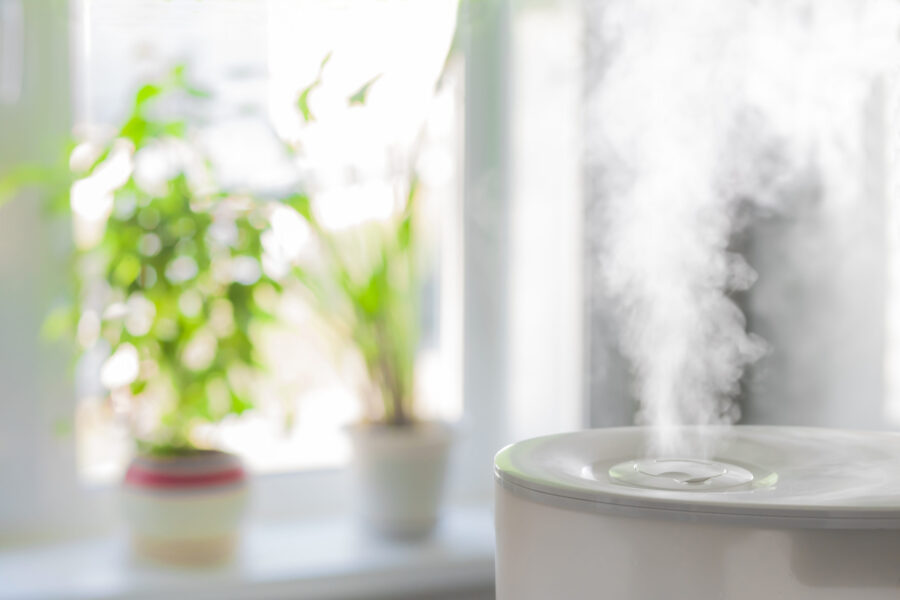Does your room smell musty? Does it feel damp and unpleasant inside your home? With the increasing awareness about the importance of maintaining indoor air quality, more and more people are opting to install dehumidifiers in their homes, offices, and commercial facilities.
High humidity can cause all kinds of problems. Dehumidifiers are used to absorb excess moisture from the air. This is vital in preventing moisture-related health problems as well as building conditions like mildew and mold build-up.
How does a dehumidifier work?
A dehumidifier works more like a vacuum cleaner. It sucks in air and removes the moisture out of it before blowing it back to the room. It has a mechanism that is similar to an air conditioning unit too. The warm air pass through freezing cold pipes to convert the moisture into water. This then drips into a tank which you have to empty from time to time.
Pros of Using a Dehumidifier
- Greatly helps prevent the growth of mold and mildew
- Mold and mildew, which are often the root cause of numerous health-associated problems, love to thrive in damp places. Exposure to mold can cause asthma and allergic reactions, and other respiratory disorders. Mold and mildew also cause wood to rot easily, and can severely damage on all types of surfaces, including concrete. By eliminating excess moisture, installing a dehumidifier is a key step in combating mold and mildew.
- A dehumidifier minimizes condensation
- The things we do on a daily basis, such as showering and cooking all contribute to condensation, which makes it a common problem in every household.
- More comfort and less musty smell
- High humidity doesn’t only cause a musty smell inside homes or offices. It also causes discomfort and dampness. What’s more, dampness does not only spell discomfort, it can also cause damage to your precious furniture, books, and furnishings. A dehumidifier greatly works in making indoor air better and fresh.
Cons of Using a Dehumidifier
- It needs regular check and cleanup
- Just like any electrical device, a dehumidifier requires regular maintenance. You should make sure to empty the water tank regularly as it could become a habitat of harmful microorganisms.
- Using a dehumidifier adds up to your electricity bill
- A standard model runs at 280 Watts-hour. If the running cost per KW is 4.2 cents, and you will run a dehumidifier for 12 hours, that’s an additional 50 cents on your bill.
- Finding the right dehumidifier can be a challenge
- To ensure that the device works perfectly, you need to make sure that you are choosing the right model and power capacity that suits your home or office. Dehumidifiers come in various designs, from portable to one-room units. You may need the help of a professional in determining the right type or model of dehumidifier for your home or place of business.
- Bigger machines are more expensive
- If humidity is a serious problem in your entire house, you should look for a whole-house dehumidifier which is usually tied to HVAC system. Of course, this type of dehumidifier isn’t cheap. You also need to calculate the area’s square footage. Look for the model that holds ten pints of water for a 500-square-foot space.
Getting the Most from Your Dehumidifier
Ideally, you should aim for a relative humidity level of between 30% and 50%. It is also a good idea to vacuum floors first before turning on your dehumidifier so it doesn’t spread dust. This is a very important step especially if you suffer from allergy.
uHoo pairs best with most commercial dehumidifiers. Aside from its 9 dedicated indoor air quality sensors (humidity, temperature, particulate matter, tVOCs and more), this sleek indoor air quality sensor is IFTTT-compatible meaning it could connect to your Amazon Echo or Google Home. Once set up, uHoo can automatically turn on or shut off your dehumidifier or air-conditioning to maintain the optimum humidity and temperature for your home.
There is no doubt that a dehumidifier is a very helpful device for promoting better indoor air quality. However, to get the most out of it, you need to choose the right model for your home or building, and use it with care.







